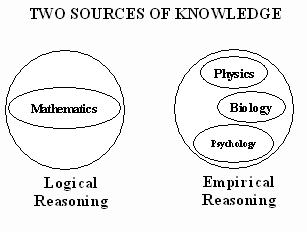
First published in the proceedings of the 4th Annual Conference of the Altshuller Institute for TRIZ Studies (TRIZCON 2002), April-May 2002
TRIZ and the Deconstruction of the Major World Philosophies
Part I: Logical Positivism
Michael S. Slocum, K.O.St.I., Ph.D.
Vice President of Science and Engineering
Ontro Inc.
13250 Gregg Street
Poway, CA 92064
P 858.486.7200
F 858.486.7204
mslocum@ontro.com
Editor�s Note: Dr. Slocum has authored this paper as an exploratory work demonstrating a novel application for TRIZ (Su-Field modeling specifically). It is intended to act as a stimulant for the development of additional novel utilizations of TRIZ. Any interest in this particular line of research should be directed to Dr. Slocum. Dr. Slocum intends to complete this series in 10 parts. The next philosophy to be deconstructed is open for suggestion.
ABSTRACT
Substance-Field modeling can be used in order to deconstruct philosophical worldviews. The construction of a philosophy and even the language used to relay the concepts can be diagrammatically deconstructed ( a la Carnap or Wittgenstein) in order to demonstrate the technical or physical contradiction that was resolved by the great thinker. Direct correlations with Substance-Field analysis will be made. A model for logical constructions will be presented as well as a standard algorithm for the decomposition and development of logical arguments.
Logical Positivism (LP): LP emerged from Austria and Germany during the 1920�s and was primarily focused on the logical analysis of Scientific knowledge. LP denied the soundness of metaphysics1 and traditional philosophy; the LP�s asserted that many philosophical problems are indeed meaningless. According to LP, there are two sources of knowledge: logical reasoning and empirical experience. The former is analytic a priori, while the latter is synthetic a posteriori.2

Figure 1.0
A statement is meaningful if and only if it can be proved true or false by means of experience - this assertion is called the Verifiability Principle.3
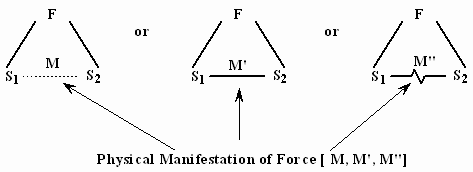
Figure 2.0
Empirical Experience Required by LP to Indicate Knowledge
The absence of an observable phenomenon would indicate a failure to meet the verifiability principle or possible a measurement and/or detection problem. The connection between objects (S1 and S2) may exist but be unobservable. This would yield a situation in which the connection could be pointed a priori utilizing logical reasoning.
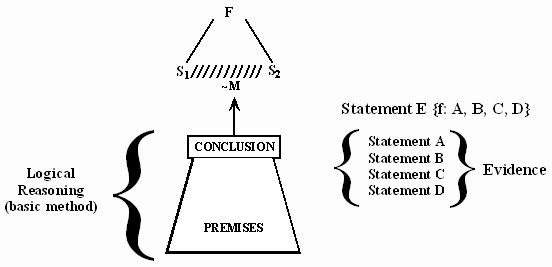
Figure 3.0 [Hurley]
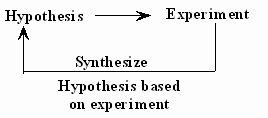
The unobserved phenomenon is pointed to exist (~M) based on logical reasoning. This process can be demonstrated as:
When we are confident that understanding of a situation is precise? Obviously, if and only if we are able to precisely describe the conditions in which it is possible to answer in the affirmative, or respectively, the conditions in which it is necessary to answer with the negative. The meaning of a situation is defined only through the specification of those conditions. The definition of the circumstances under which a statement is true is exactly equivalent to the definition of its meaning. �� a statement has a meaning if and only if the fact that it is true makes a verifiable difference.�4
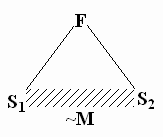
Figure 4.0
~M exists if and only if the interaction between S1 and S2 is modified in some manner by ~M. If three is no interaction (see Figure 1.0) then ~M does not exist.
The strength of the verification relies on the strength of the experiment of observation. Metaphysical statements are meaningless. The traditional role of philosophy is also meaningless, the only role of philosophy is the clarification of the meaning of statements.
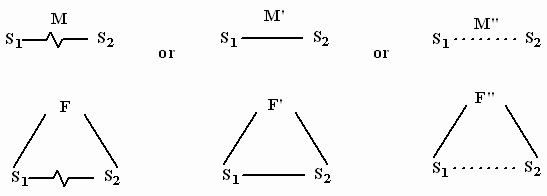
Figure 5.0
M, M�, or M� do NOT exist without a corresponding F, F�, or F�. The validity of M rests on the strength of the logical construct under lying it (see Figure 3.0).
Philosophy, then, is the activity by means of which the meanings of statements/interactions is clarified and defined. If Substance-field modeling is indeed efficient at this clarification and definition then you could call it a philosophical methodology. A scientific theory is an axiomatic system that obtains an empirical interpretation through appropriate statements called rules of correspondence, which establish a correlation between real objects and the abstract concepts of the theory.

Figure 6.0
a and a� are abstract concepts while S1 and S2 are real objects. The Su-field model, they also indicate the correlation between real objects and abstract concepts. M is synthetic and a/a� are analytic.
The language of a theory includes two types of terms: observational (M) and theoretical (a or a�) (see Figure 6.0). The statements of a theory are divided into two groups: analytic and synthetic. Observational terms denote objects or properties that can be directly measured (or observed), while theoretical terms denote objects or properties we cannot observe or measure but can only be inferred from direct observations (see Figure 6.0).
As a (or a�) is observed directly or indirectly (if possible) it moves from the realm of abstract and theoretical to the realm of real and observable. To maintain the abstract component, a new Su-field model must be created:

Figure 7.0
Analytic statements are a priori and their veracity is based on the syntax of the language; contrarily, synthetic statements depend on experience (also the only method to acknowledge their veracity) (see Figure 6.0).
This construction concerning the structure of scientific theory was proposed by Reichenbach and Carnap in 1928.5 6The main points of this structure are:
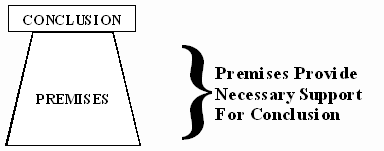
Figure 8.0
Rules of correspondence give an empirical meaning to theoretical terms and all analytic, while theoretical axioms express the observational portion of the theory and are synthetic. A theory must be a deductive system or syntax degrades.

Figure 9.0
The effects of the premise(s) or the conclusion
The arrangement in Figure 9.0 would also remain valid for the Su-field model:

7Figure 10.0
If the relationship between S1 and S2 is incorrect, then the S1-S3 correlation will be affected. If a� or b are invalid then the F-F� correlation will be invalid.
The distinction between observational and theoretical terms depend on the verifiability principle. A statement is meaningful only if it is verifiable; but, in scientific theories, there are many statements which are not verifiable8. These statements are too abstract for a direct test (meaningless). According to Schlick, the principles of a scientific theory are not statements, but rules of inference; hence, the problem of meaning does not arise9. Another solution was proposed by Neurath: the terms which belong to the abstract language of a scientific theory are explicitly definable in a restricted language whose terms describe directly observable and theoretical terms arose. Carnap realized that theoretical terms are not definable by observational terms. All theoretical terms are removable from a scientific theory.
This hypothesis is supported by two resultants of formal logic:
Craig Theorem
Let A and B be two sets of statements, so that B is a logical consequence of A. Craig proved that (i) there is a set C of statements whose terms are common to A and B, (ii) C is a logical consequence of A, and (iii) B is a logical consequence of C. Therefore, if A is the set of axioms of a scientific theory and B is the set of observational statements implied by A, then there is a set C, whose terms are common to A and B and thus they are the observational terms which occur in the axioms, so that C entails B and is a consequence of A. Therefore, it is possible to translate a scientific theory into a purely observational language without any loss of deductive power.
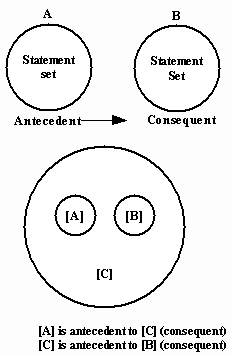
Figure 11.0
Craig Theorem
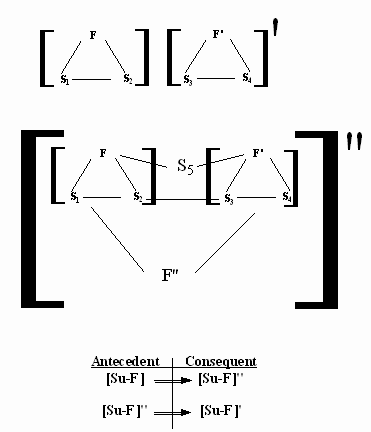
Figure 12.0
Craig Theorem as it applies to Su-field Modeling
Ramsey Statement
The Ramsey statement was utilized by Carnap for the division of the axioms of a theory into two sets: A and R, so that R contains only observational terms and expresses the empirical portion of the theory, while A is analytic and defines the meaning of theoretical terms. Given a theory T, it is thus possible to build a theory T� without theoretical terms so that T and T� are equivalent with respect to observational statements, that is every observational statement. O is a logical consequence of T if and only if it is a logical consequence of T�.

Figure 13
Ramsey Statement
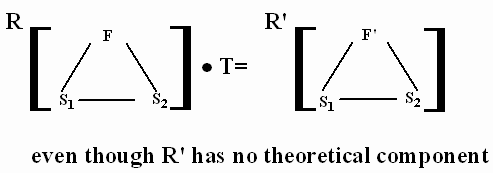
Figure 14
Ramsey Statement as it applies to Su-field analysis
Consider the observational steps (R) as the substances involved (S1 and S2) and their interaction (if physically manifested). The theoretical aspect (A) is supposed as the force (Fx) driving the physical manifestation (M). The prime proven yielding Fx as a resultant, according to Ramsey, would then be equivalent, at least in concept, to Fy if Mx is equivalent to My. This principal may allow for the simplification of comparative analysis of Su-field models (as the theoretical aspect, A, need not be considered).10
Logical Positivism assumes that a theory is a deductive system. Therefore, observational techniques would yield data indicative of the deductive path that will result in a perceived reality that closely mimics actual reality.
This enhances the importance of the measurement and detection standards found in Class 4 of the 76 Standard Solutions.
I have attempted to provide an analysis of logical positivism based on Substance-field analysis. Clearly, I could continue as I have merely covered a few of the primary tenants of logical positivism. This work will continue as I seek the correlations between Su-Field analysis and other philosophies.
Author Biography:
Michael S. Slocum, K.O.St.I., Ph.D.
Vice President of Science and Engineering
With over 14 years of research and development experience at ITT Space and Special Projects and the U.S. Army Military Intelligence, Dr. Michael Slocum has become an expert in Problem Solving, Research and Development, Engineering, and Quality. In Dr. Slocum's career, he has worked on the TITAN missile, SeaWolf submarine, Trident submarine, International Space Station, and numerous satellite programs. Most recently, Dr. Slocum served as Principal and Chief Scientist of The Inventioneering Company where he specialized in solving previously intractable technical problems.
Dr. Slocum studied at the U.S. Army Intelligence School and Trinity College where he earned his Ph.D. in Physics. He currently is an Adjunct Professor at North Carolina State University where he teaches a graduate course on the Theory of Inventive Problem Solving. Dr. Slocum is an editor of the TRIZ Journal (www.triz-journal.com). Dr. Slocum is a member of the ETRIA Global Coordination Group, the New Technology Review Panel of the NFPA, Sigma Xi, IFT, SPE, New York Academy of Sciences, ASM, the American Physical Society, American Chemical Society, and several other relevant professional societies. Dr. Slocum was recently knighted in recognition of his contributions to science and society.
___________________
Endnotes:
|
�
Copyright 1997-2005 CTQ Media LLC |